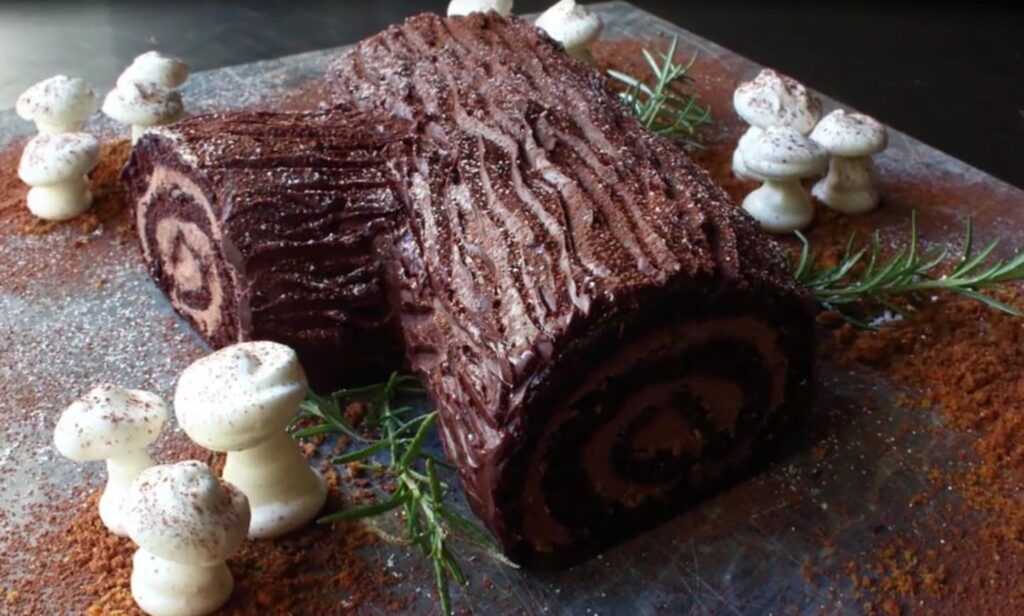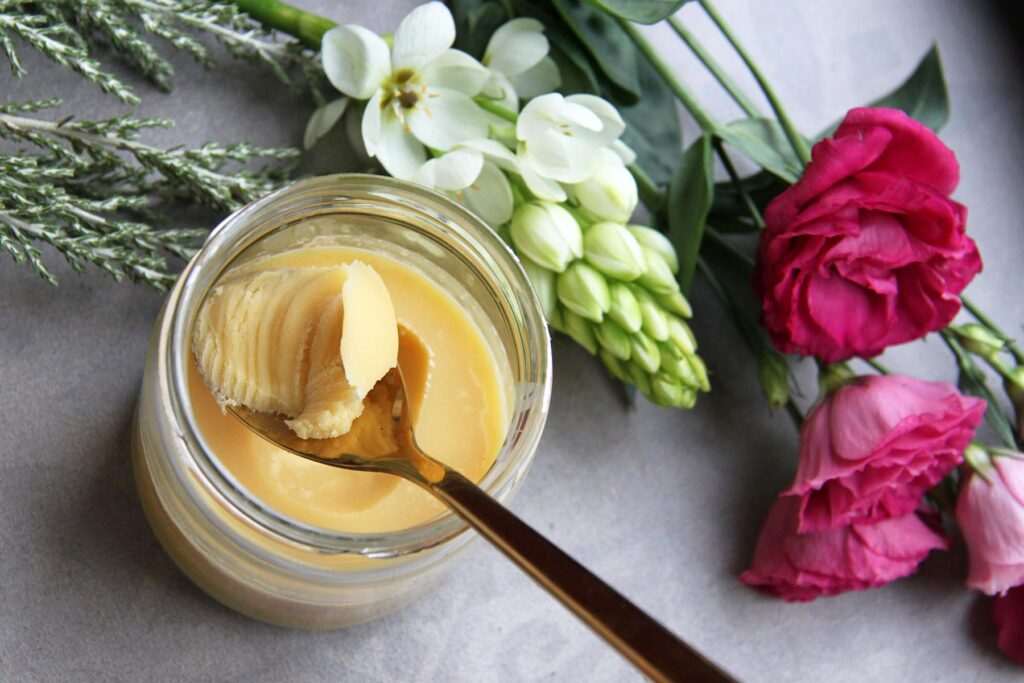
The Yule log cake, also known as “Bûche de Noël” in French, is a festive dessert that originates in the medieval era, particularly in France and other European countries. The cake is designed to resemble a Yule log, drawing inspiration from the traditional Yule log that was burned in the fireplace as part of winter solstice celebrations.
The cake is widely seen around Christmas time in the United States, United Kingdom, Cambodia, Scandinavia, Portugal, and Spain, among other places. It is a light genoise sponge cake rolled with a filling (often chocolate or cream) and then decorated to resemble a tree log. These cakes are usually served with one end cut and set to protrude from the side of the cake to resemble a log more. It is given a “bark-like” texture by gently dragging a fork through the icing and sprinkling with powdered sugar, resembling fresh fallen snow. Decorations may also include tree branches, fresh berries, and other forest plant life, such as mushrooms, made from meringue or marzipan. They are a delicious and festive treat enjoyed during the holiday season.
Here is a brief history of this tasty and unique holiday cake:
Pagan and Medieval Origins: The Yule log cake’s history is closely tied to the tradition of burning an actual Yule log during the winter solstice, which was a pagan practice in many European cultures. The Yule log symbolized the year’s turning point, with the sun’s return and longer days. In medieval times, saving a piece of the Yule log became customary to bring good luck and protection to the household.
Christian Symbolism: As Christianity spread across Europe, the Yule log tradition was adapted to fit into Christian celebrations, particularly Christmas. The Yule log’s symbolism of light and renewal was associated with the birth of Jesus Christ, who was often referred to as the “Light of the World.” Similar to many pagan traditions and practices, the Yule log was transformed into a Christian symbol in order to better indoctrinate people into the religion in these areas of the world.
Transition to Culinary Tradition: Over time, the Yule log cake emerged as a culinary interpretation of the Yule log. The cake’s popularity grew tremendously throughout the 19th and 20th centuries.
Evolution of Decoration and Flavors: As baking techniques and culinary creativity advanced, so did the Yule log cake. The decoration of the cake became more intricate, often featuring chocolate bark textures, marzipan decorations, and other festive designs. The flavors of the cake also diversified, with various fillings and frostings being used, including chocolate ganache, whipped cream, fruit compotes, and more.
Global Spread: The Yule log cake is now enjoyed by people in various parts of the world and has become a beloved holiday tradition. It’s a delicious dessert and a centerpiece that adds a festive touch to Christmas celebrations.
The Yule log cake’s history blends ancient pagan practices, Christian symbolism, and culinary innovation. It reflects how traditions can evolve and transform over time while maintaining connections to their historical roots.
Happy holidays!
Do you enjoy a Yule log cake for the holidays? Let us know in the comments!



